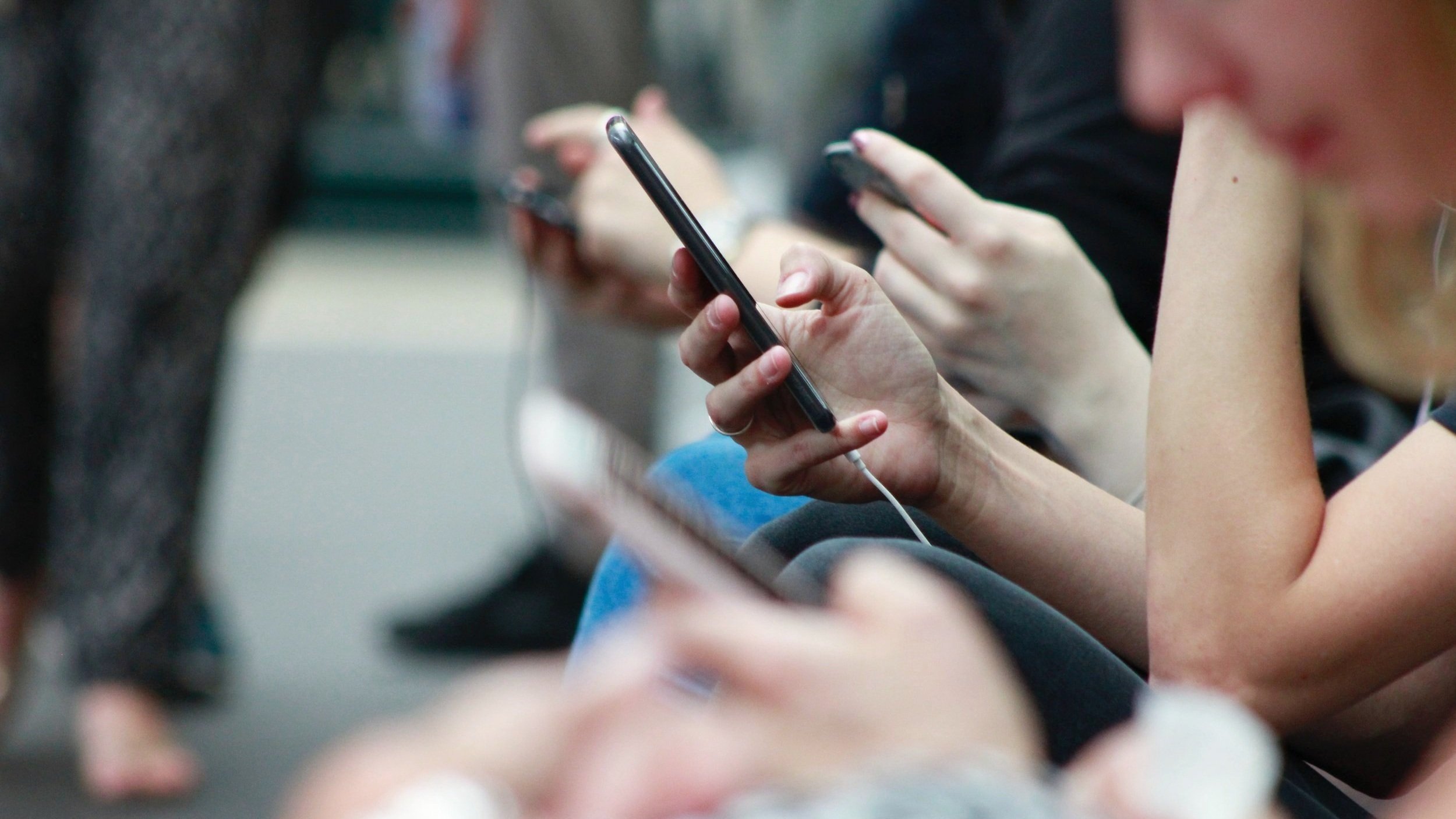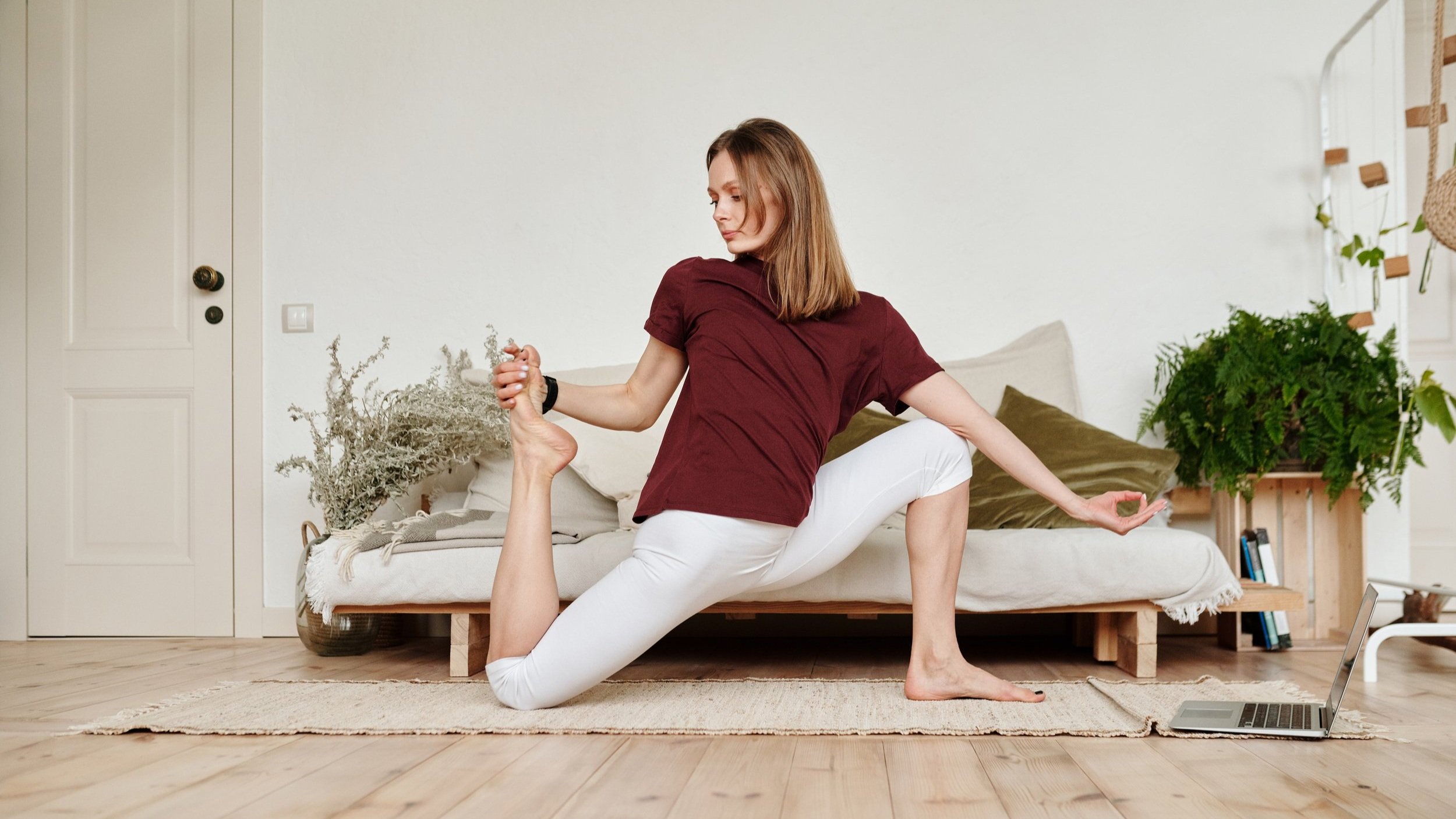Digital wellbeing: 15 tips to help you thrive on and offline
At the start of 2021, after almost a year of lockdown and online living, I wrote an article about digital self-care which seemed to resonate with readers and to this day it remains one of the most popular articles that I’ve written. Now, two years on, the lockdowns have lifted but digital overuse and overwhelm remain a challenge for many of us. Therefore, in this updated and improved blog post, I explain what digital wellbeing is, why practising digital self-care is so important and 15 strategies to help you flourish on and offline.
What is digital wellbeing?
Digital wellbeing falls on a spectrum, ranging from unplugging and going off-grid to excessive technology use. As with most things, neither extreme is good for us. When we become addicted to technology it can disrupt many of the social, emotional, mental and behavioural processes that support our wellbeing, like going outside for a walk or socialising with friends IRL. In contrast, when we deprive ourselves of technology, we are also cutting ourselves off from modern society as more and more of our day-to-day life is going (in part) online, whether it’s organising a doctor’s appointment or staying in touch with friends and family abroad. Ideally, we want to strike a balance between these two extremes.
To determine where you fall on this spectrum, consider the following:
Where and when you use technologies: are you constantly checking your phone? Do you watch Netflix while you’re eating? Are you texting while you’re out with friends? Is your phone the first and last thing you see each day?
How you use technologies: are you mindlessly scrolling through social media? Or are you being intentional?
Why you use technologies: are your digital habits aligned with your values and goals? Or are they getting in the way of the person you want to be?
Who do you connect with using technology: are you chasing many superficial connections? Or are you investing in meaningful online relationships?
As you can see, assessing your digital wellbeing is not just a matter of how much time you spend in front of a screen.
15 digital wellbeing tips
Without practising digital self-care, many of us will tend towards digital overuse and addiction, which in turn can impact our productivity, relationships, self-esteem, sleep and mental and physical health. This is why it’s so important to set boundaries and practise regular digital self-care. Below are 15 tips to help you establish positive and healthy digital habits as well as some suggestions for using technology to your advantage.
1) Track your screen time
A good place to start when trying to improve your digital wellbeing is to get a better understanding of how you’re using your devices, particularly if you tend to lose track of time when you’re on your phone or computer. There are many ways of monitoring your tech use, such as using the in-built screen-time tracker of your iPhone (Settings > Screen Time) or android device (Settings > Digital Wellbeing and parental controls), installing an app like Freedom, Moment and Breakfree, or tracking it manually in your journal.
2) Declutter your apps
Once you have a better understanding of how you’re using your devices, including which apps are sucking up your time and which apps go untouched, it’s time to organise and manage your apps. Firstly, start by deleting apps that you don’t need or want. If you’re unsure if you need an app, try temporarily deleting it from your device (this doesn’t delete your account) and see what happens. If you miss it you can always re-install it and if you don’t, you’ve freed up a bit of space and time! Alternatively, if that feels too drastic, you can move these apps away from your home screen and into a folder. By rearranging your apps and reducing accessibility, it encourages you to be more mindful of your actions rather than automatically clicking on them. You might also find that after a few months you completely forget you even have those apps and it might be a good time to part ways.
3) Turn off notifications
Do you check messages, emails or social media the moment you receive a notification? Do you do this on autopilot? This might be a sign that your notifications are governing your life and getting in the way of your other tasks and activities. Therefore, customise the apps you’ve decided to keep to reduce distractions and help you stay in control of when and where you use your devices. For example, turn off push notifications or if you need the notification (e.g. as a reminder to practice a habit) manage when and how you get notified.
4) Set daily limits on your devices and apps
Set daily app usage limits on your phone to restrict your daily usage: for android devices, you can set app timers via Digital Wellbeing while you can use Screen Time to set app limits on your iPhone or iPad. If you use streaming and/or social media platforms, turn off autoplay and endless scrolling to stop you from binging an entire season or scrolling your day away. You can also create your own rules to limit your usage, for example, “if I’m with friends I’ll put my phone away” or “I’ll leave my phone in another room when eating meals”.
5) Unfollow people and accounts that don’t serve you
Unfollow people or accounts that make you feel stressed, less than or do not add joy or meaning to your life. As with offline relationships, try to focus on quality rather than quantity. Instead of having many superficial online connections, try to engage in meaningful online interactions with people or accounts that amplify your wellbeing rather than deplete it.
6) Create tech-free spaces in your home
Does your phone follow you around? Does it know you so intimately that it hangs out in the bedroom and toilet with you? If yes, it might be time to set some boundaries in this co-dependent relationship! Try to create some spaces in your home that are tech-free, such as your bedroom or if that’s not possible, your bed.
7) Start and end your day tech-free
For many of us, our phones are the first things we pick up in the morning and the last thing we put down at night (closely followed by our computers!). If it’s not possible to make your bedroom a tech-free space, use features such as bedtime mode on your phone to help you create a healthier nighttime routine, turn your phone on aeroplane mode at night so you don’t get interrupted by notifications (ideally you shouldn’t have many of these - see point 3) and place your phone across the room to stop you from automatically reaching for it. Also, think about how you would like to start and end your day instead, such as swapping scrolling with journaling, reading or going for a walk.
8) Take breaks from your phone
From putting your phone away for a couple of hours to unplugging from technology for an entire weekend or week (often referred to as a ‘digital detox’), taking breaks from the digital world can really help improve your wellbeing and allows you to fully focus on the things that matter to you. Use those breaks to get outside, connect with those you love, get creative or do an activity you enjoy. If you can’t step away from your phone because of responsibilities, set up your phone so that you can only receive texts and calls - this way you are reachable but not overwhelmed by pinging and buzzing.
9) Minimise blue light exposure
Blue light emitted from our screens can negatively impact your wellbeing. Firstly, research suggests that constant blue light exposure can be harmful to your eye health by damaging your retinas, which coupled with digital eyestrain from hours spent in front of screens, means that your devices can worsen your vision. In addition, being exposed to blue light in the evening tricks your brain into thinking it’s still daytime and suppresses the biological mechanisms that promote sleep. Some ways to reduce blue light exposure include: turning off your devices well before bedtime (ideally 2-3 hours before bed), dimming the brightness of your devices or setting your phone to night/dark mode, and using blue light filters (e.g. blue-light blocking glasses and blue-light filtering apps).
10) Document intentionally
Many of us try to document everything we do, see, think, eat and so on. While there is nothing wrong with sharing snippets of your life on social media, it can become problematic when it is done excessively and with no intention. When you’re preoccupied with getting the perfect shot of your breakfast, filming a night out with your friends or coming up with the wittiest caption, you’re not being present and savouring what’s in front of you. If you feel a need to document every aspect of your life, ask yourself what you are looking for. Is it validation, inclusion, recognition or reassurance? If so, are there more constructive and healthy ways that you can get these needs met?
11) Consume mindfully
Most of us consume content mindlessly, whether it’s scrolling through our social media feeds, watching a never-endless stream of YouTube videos or consuming podcast after podcast. Content is so readily accessible that we are barely aware, let alone mindful, of what we are taking in. To tackle this, start by becoming more aware of how you respond to what you interact with. Does it make you feel stressed? Sad? Angry? Doubtful? While these emotions are just as valid as “positive” ones if you are regularly feeling low or stressed by the content you’re consuming it might be a sign that it’s not good for your emotional and mental health. Once you’ve become more aware of your emotions, ask yourself: Is this post worth my time and attention? Does it add value to my day/life in any way? If not, move on or, even better, swap your phone with more meaningful activity.
12) Limit online “social snacking”
Like eating surgery snacks, which are temporarily satisfying but quickly followed by sugar crashes and hunger, online social snacking has a similar effect. Initially, we might experience scrolling through our friends’ posts as rewarding as it makes us feel up-to-date and give us the illusion of connection. However, in the long run, we can become deficient in the meaningful interactions that contributes to our sense of belonging and overall wellbeing. Furthermore, passively using social media can promote social comparison that can leave us feeling inferior and jealous of others’ (highly curated) lives.
13) Let’s get physical
Our devices, especially when used excessively, are harmful to physical health. Sitting at our computer all day can impact our posture and make us more sedentary which has been associated with obesity, cardiovascular disease and cancer. As we saw before, our eyes and sleep are negatively impacted by the blue light exposure from our devices. Lastly, continuous access to digital content can overload our brains and adversely affect our ability to process and store information. Some things we can do to mitigate the effects of our digital lifestyles are to take regular breaks from technology throughout the day, make sure our working space is set up correctly (e.g. screen is a height level with your eyes and at arm’s distance), use an ergonomic office chair, reduce overhead lighting to minimise screen glare and frequently move (e.g. getting out of your chair and stretching every hour and going for a walk in your lunch break).
14) Set digital boundaries for work
How often do you get distracted by work notifications when you’re meant to be enjoying a relaxing evening? And what about checking your work email when you’re meant to be enjoying your weekend away? In the same way that we carry our phones wherever we go, many of us also carry out work with us 24/7. Therefore, creating space from work-related distractions and temptations can help you protect your personal time and recharge. Establish some digital boundaries by using the do not disturb and out-of-office features, logging out of your work profile and apps at the end of the day, and letting your colleagues know that you are not available outside office hours (if your profession allows this).
15) Use technology to your advantage
As mentioned earlier, technology (when used in an intentional, balanced way) can add to our wellbeing and help us thrive in the modern world. For example, it has given us access to lots of health and wellness resources, including informative articles and podcasts, apps that help you establish healthy habits (e.g. mindfulness, meditation, exercising) and online communities and groups where members can support and empower each other. While it might take some research and trial and error to discover which digital resources work for you, it is possible to leverage technology in a way that boost your wellbeing.
Takeaways
Technology will continue to be an ever-present part of our daily lives but this doesn’t mean that we need to fall into a pit of distraction, comparison and sleep deprivation. Instead, by putting in place digital self-care practices and using technology to our advantage we can digitally flourish as well as protect and promote our overall wellbeing.
Resources
Article by Jenna Clark for Greater Good Magazine - What Makes Technology Good or Bad for Us?
Article by Mary Gomes for Greater Good Magazine - Five Reasons to Take a Break from Screens
Article by Joe O’Brien for The Food Medic - What is Social Media Doing to Our Mental Health?
Ted Interview by Naomi Shimada - Tips for reclaiming your peace of mind online








